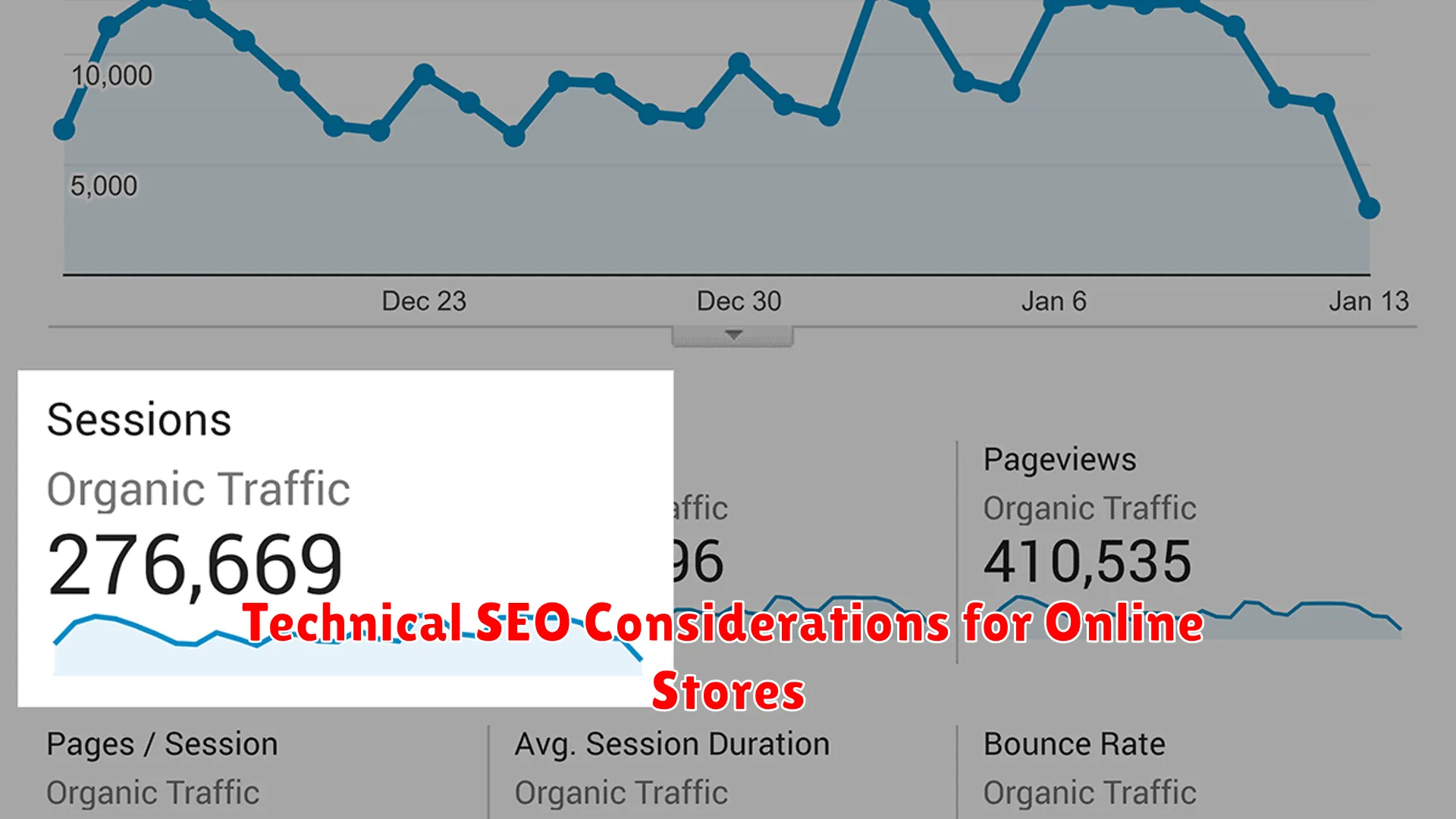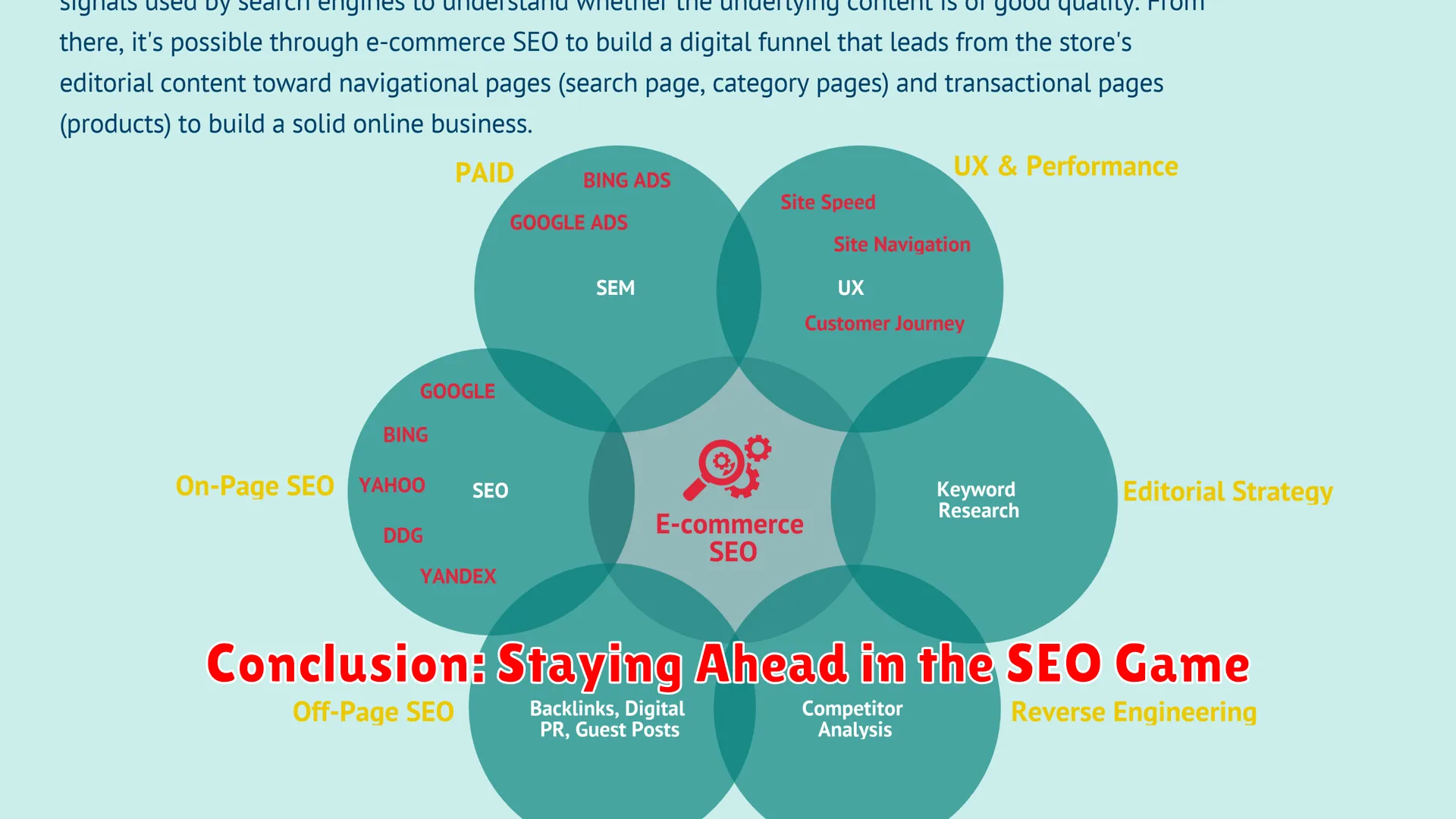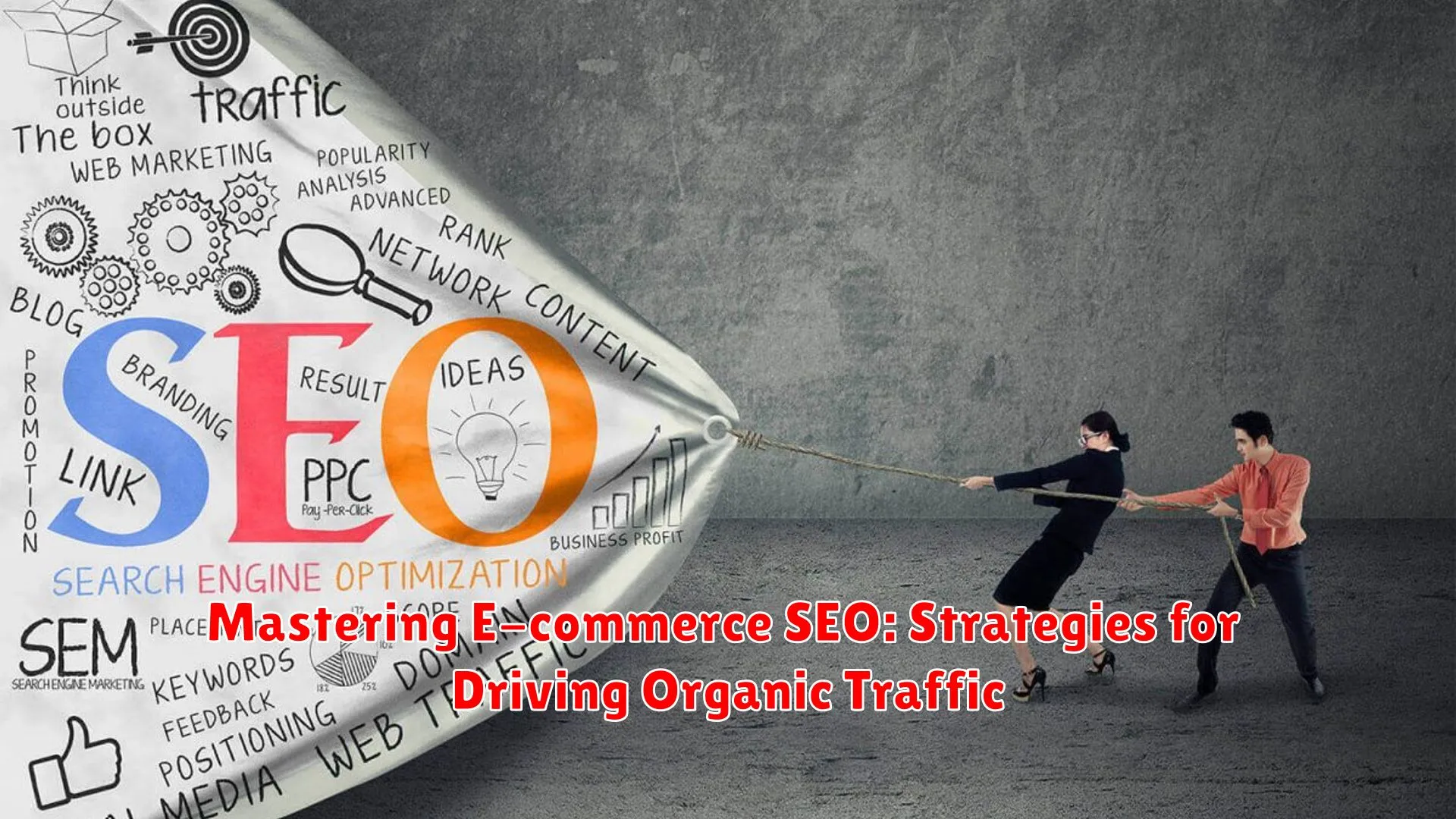Learn how to boost your online visibility with effective E-commerce SEO strategies in our comprehensive guide on driving organic traffic to your website.
Understanding SEO Fundamentals for E-commerce

When it comes to mastering E-commerce SEO and driving organic traffic to your online store, understanding the fundamentals of search engine optimization (SEO) is crucial. SEO plays a pivotal role in determining the visibility of your E-commerce website in search engine result pages (SERPs).
Here are some key SEO fundamentals that are essential for E-commerce success:
- Keyword Research: Conduct thorough keyword research to identify the most relevant and high-volume keywords related to your E-commerce products or services. Utilize tools like Google Keyword Planner or SEMrush to discover profitable keywords.
- On-Page Optimization: Optimize your product pages and category pages with relevant keywords, meta tags, and engaging product descriptions. Ensure that your website is user-friendly, fast-loading, and mobile-responsive.
- Quality Content: Create high-quality and unique content that provides value to your target audience. Incorporate keywords naturally within your content and optimize images with descriptive alt tags.
- Link Building: Build authoritative backlinks to your E-commerce website from reputable sources. Focus on acquiring quality backlinks that can boost your website’s credibility and improve search engine rankings.
- Technical SEO: Pay attention to technical aspects such as website speed, URL structure, sitemap, and schema markup. Ensure that your website complies with search engine guidelines for better indexing and crawling.
By mastering these SEO fundamentals, E-commerce businesses can enhance their online visibility, attract targeted organic traffic, and ultimately drive conversions and revenue. Stay updated with the latest SEO trends and algorithm changes to stay ahead in the competitive E-commerce landscape.
Keyword Research for Product Pages

Mastering e-commerce SEO requires a strategic approach to driving organic traffic to your online store. One crucial aspect of an effective SEO strategy is conducting thorough keyword research for your product pages.
When optimizing your product pages for search engines, it is essential to choose the right keywords that align with your target audience’s search queries. Below are some key steps to help you master keyword research for product pages:
- Identify Relevant Keywords: Start by brainstorming a list of potential keywords related to your products. Consider using tools like Google Keyword Planner, SEMrush, or Ahrefs to discover popular search terms in your niche.
- Focus on Long-Tail Keywords: Long-tail keywords are more specific and targeted, making it easier to rank for them. Include descriptive phrases that potential customers are likely to use when searching for products.
- Consider Search Intent: Understand the search intent behind each keyword to ensure your product pages align with what users are looking for. Are they seeking information, looking to make a purchase, or comparing products?
- Competitor Analysis: Analyze the keywords your competitors are targeting and identify gaps in their strategy. Look for opportunities to target keywords they may have overlooked.
- Optimize Product Titles and Descriptions: Incorporate your selected keywords naturally within your product titles, descriptions, and meta tags. Avoid keyword stuffing and focus on creating quality, relevant content.
- Monitor and Refine: SEO is an ongoing process, so regularly monitor your keyword performance using tools like Google Analytics. Make adjustments to your strategy based on performance data and trends.
By mastering the art of keyword research for your product pages, you can significantly improve your e-commerce SEO efforts and drive more organic traffic to your online store.
On-Page Optimization Techniques

On-page optimization plays a crucial role in enhancing the search engine visibility of an e-commerce website. By utilizing effective on-page SEO techniques, you can improve your site’s organic traffic and attract more potential customers.
Here are some essential on-page optimization techniques to master for driving organic traffic to your e-commerce site:
- Keyword Optimization: Conduct thorough keyword research and strategically place relevant keywords in your page titles, meta descriptions, headers, and content. Ensure your keywords are naturally incorporated and align with user intent.
- High-Quality Content: Create engaging and informative content that is optimized for both users and search engines. Focus on delivering value to your audience through product descriptions, blog posts, and category pages.
- Optimized Images: Compress image sizes for faster loading speeds, add descriptive alt text, and use relevant file names to improve image SEO. Visual appeal is important for user experience and can positively impact your SEO efforts.
- Mobile-Friendly Design: Optimize your e-commerce site for mobile devices to cater to the increasing number of mobile users. Ensure responsive design, fast loading times, and easy navigation on smartphones and tablets.
- Internal Linking: Create a logical internal linking structure to guide users through relevant pages on your site. Internal links improve website usability, help distribute link equity, and encourage visitors to explore more of your content.
- Meta Tags Optimization: Write compelling meta titles and descriptions that accurately represent your page content. Meta tags are crucial for attracting clicks from search engine results pages (SERPs) and should include relevant keywords.
- Page Speed Optimization: Improve your site’s loading speed by optimizing images, enabling browser caching, and minimizing code. Fast-loading pages provide a better user experience, reduce bounce rates, and positively impact search engine rankings.
Building Quality Backlinks for E-commerce Sites

When it comes to driving organic traffic to E-commerce sites, mastering the art of building quality backlinks is crucial. Backlinks, also known as inbound links, play a significant role in search engine optimization (SEO) by indicating to search engines that your site is credible and trustworthy.
Here are some effective strategies for building quality backlinks for E-commerce sites:
- Create High-Quality Content: One of the best ways to attract backlinks is by creating valuable and engaging content that people want to link to. Whether it’s informative blog posts, product guides, or interactive tools, focus on creating content that adds value to your target audience.
- Reach Out to Influencers: Collaborating with influencers in your industry can help you secure backlinks from their websites. Build relationships with influencers through partnerships, guest blogging, or product collaborations to earn high-quality backlinks.
- Guest Posting: Writing guest posts for reputable websites in your industry is another effective way to build backlinks. By contributing valuable content to other sites, you can earn backlinks to your E-commerce site and increase your online visibility.
- Engage in Digital PR: Utilize digital PR strategies such as press releases, interviews, and online mentions to generate backlinks from authoritative sources. Establishing your brand as a thought leader can attract natural backlinks from news outlets and industry publications.
- Monitor and Disavow Bad Backlinks: Regularly monitor your backlink profile to identify any low-quality or spammy backlinks. Use Google’s Disavow Tool to remove toxic backlinks that could harm your SEO efforts and focus on building quality links instead.
Conclusion
By implementing these strategies and focusing on building quality backlinks, E-commerce sites can improve their SEO performance, drive organic traffic, and enhance their online visibility.
Technical SEO Considerations for Online Stores

Effective E-commerce SEO requires a comprehensive understanding of technical aspects to enhance online store visibility and drive organic traffic. Here are crucial technical SEO considerations for optimizing online stores:
1. Mobile-Friendliness
Ensure your online store is mobile-responsive for seamless user experience across all devices. Google prioritizes mobile-friendly websites in search results, impacting organic traffic and rankings.
2. Page Speed Optimization
Improve loading speed by compressing images, reducing server response time, and enabling browser caching. Faster loading times lead to better user experience and higher search engine rankings.
3. Structured Data Markup
Implement structured data markup using Schema.org to help search engines understand your products, prices, and reviews. This enhances visibility in search results with rich snippets and product information.
4. SEO-Friendly URL Structure
Create descriptive and keyword-rich URLs for product pages and categories. Optimized URLs improve search engine crawlers’ understanding of your content and can boost organic traffic.
5. Internal Linking Strategy
Develop a strong internal linking strategy to connect relevant pages within your online store. Internal links help search engines navigate your site and distribute link equity effectively for better search visibility.
6. Secure Website with HTTPS
Ensure your online store is secure by using HTTPS encryption. Secure sites provide a safer browsing experience for users and are favored by search engines, potentially boosting organic search rankings.
7. Canonical Tags and Duplicate Content
Implement canonical tags to avoid duplicate content issues, especially for product variations or similar pages. Canonicalization helps search engines understand the preferred version of a page for indexing and ranking purposes.
8. XML Sitemap Optimization
Generate an XML sitemap to ensure search engines can crawl and index all relevant pages of your online store. Regularly update and submit the sitemap to search engines for improved visibility and indexation.
Measuring and Analyzing SEO Performance

When it comes to mastering E-commerce SEO and driving organic traffic, one crucial aspect is measuring and analyzing SEO performance effectively. This process involves tracking various metrics to gauge the success of your SEO strategies and make informed decisions for optimization.
1. Utilize Key Performance Indicators (KPIs)
Define and monitor KPIs such as organic traffic, conversion rates, bounce rates, keyword rankings, and backlink quality. These indicators provide insights into the performance of your SEO efforts and help identify areas for improvement.
2. Conduct Regular Website Audits
Perform routine website audits to assess technical SEO elements, content quality, mobile-friendliness, and site speed. Address any issues discovered during the audit to enhance user experience and search engine visibility.
3. Monitor Keyword Performance
Track the performance of target keywords by monitoring rankings, search volume, and click-through rates. Analyze keyword trends and adjust your SEO strategy accordingly to capitalize on high-potential keywords.
4. Analyze Competitor Strategies
Conduct competitive analysis to gain insights into your competitors’ SEO strategies and performance. Identify opportunities, learn from their successes and failures, and adapt your approach to stay ahead in the search results.
5. Measure User Engagement
Assess metrics like time on page, pages per session, and conversion rates to understand user engagement with your website. Improve content quality and usability to enhance user experience and encourage higher engagement levels.
Case Studies: Successful SEO Campaigns in E-commerce

In the realm of E-commerce, mastering SEO is crucial for driving organic traffic and achieving online success. Through the implementation of effective SEO strategies, numerous E-commerce businesses have seen significant growth and success. Let’s delve into some compelling case studies that showcase the impact of successful SEO campaigns in the E-commerce landscape.
Case Study 1: E-commerce Brand X
E-commerce Brand X, a popular online retailer specializing in fashion products, embarked on a comprehensive SEO campaign that focused on optimizing their website for relevant keywords and improving their site structure. By conducting keyword research, creating high-quality content, and obtaining authoritative backlinks, E-commerce Brand X witnessed a substantial increase in organic traffic and a significant boost in search engine rankings. This resulted in a noticeable uptick in sales and revenue for the brand.
Case Study 2: E-commerce Startup Y
E-commerce Startup Y, a newly established online store selling unique home decor items, implemented a well-rounded SEO strategy that emphasized local SEO optimization and mobile responsiveness. By optimizing their product pages for local search queries and ensuring a seamless mobile user experience, E-commerce Startup Y attracted a highly targeted audience to their site. This led to improved visibility in local search results, increased online conversions, and enhanced brand awareness within their niche market.
Case Study 3: E-commerce Marketplace Z
E-commerce Marketplace Z, a multi-vendor platform offering a diverse range of products, undertook a data-driven SEO approach that involved rigorous analytics monitoring and ongoing optimization efforts. Through continuous performance tracking, identifying user behavior trends, and refining their SEO tactics based on data insights, E-commerce Marketplace Z achieved steady growth in organic traffic and a stronger online presence. This data-centric SEO strategy enabled the marketplace to attract more vendors, enhance user engagement, and drive sustainable business growth.
Conclusion: Staying Ahead in the SEO Game

Mastering E-commerce SEO and driving organic traffic requires a combination of strategic planning and continuous adaptation to the evolving search engine algorithms. To stay ahead in the SEO game, it is essential to prioritize the following key strategies:
1. Constant Monitoring and Analysis
Regularly monitor website performance, keyword rankings, and user engagement metrics. Analyze the data to identify trends, optimize content, and make informed decisions to improve SEO efforts.
2. Quality Content Creation
Create relevant and engaging content that provides value to your target audience. Utilize targeted keywords, optimize meta tags, and incorporate multimedia elements to enhance user experience and boost organic visibility.
3. Mobile Optimization
With the increasing use of mobile devices for online shopping, ensure your website is mobile-friendly and loads quickly on all devices. Google prioritizes mobile-first indexing, making mobile optimization crucial for SEO success.
4. Link Building
Build high-quality backlinks from authoritative websites to establish credibility and improve search engine rankings. Focus on acquiring relevant and natural links to enhance your website’s authority and trustworthiness.
5. Technical SEO Enhancements
Optimize website speed, fix broken links, and ensure proper site structure to enhance crawlability and indexation. Implement schema markup, optimize URLs, and utilize XML sitemaps for better search engine visibility.
By implementing these strategies and staying abreast of the latest SEO trends, e-commerce businesses can position themselves for long-term success in driving organic traffic and maximizing online visibility.
Conclusion
In conclusion, implementing effective SEO strategies is crucial for boosting organic traffic and visibility in e-commerce websites.

